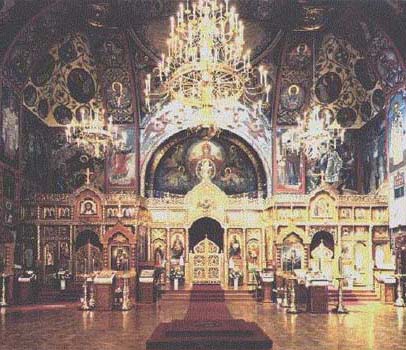Russia's church takes aim at renowned German cathedral
 Kaliningrad, Russia - Russia's state church is casting a longing eye at one of Germany's most revered Lutheran churches: the Kaliningrad Cathedral, the final resting place of philosopher Immanual Kant.
Kaliningrad, Russia - Russia's state church is casting a longing eye at one of Germany's most revered Lutheran churches: the Kaliningrad Cathedral, the final resting place of philosopher Immanual Kant.
Until the Soviet conquest in 1945 at the end of World War II, Kaliningrad was known as Koenigsberg. It was the capital of East Prussia and a bastion of Protestant German influence along the Baltic's southern coast.
But today, long after the exodus of practically every ethnic German from the Russia-controlled enclave of Kaliningrad, the Russian Orthodox church continues to battle for Christian souls, and, in this case, ownership of the real estate containing Kant's earthly remains.
A hulking, spanking-new Russian Orthodox church, the Christ Saviour Cathedral, dominates Kaliningrad's central Victory Square. Stuccoed snow white and crowned by five golden cupolas, the three- year-old government-funded edifice is now the largest house of worship in Kaliningrad.
But it seems not to be enough. Now, some Kalinigraders say, Russia's Orthodox priests are also stretching out their hands for Kaliningrad's old Lutheran cathedral, a 14th century Gothic brick church built by Prussian princes and topped by a single spire.
A bill before Russia's parliament, drafted and submitted by Russian Orthodox church officials, proposes "original owners" resume control of places of worship expropriated in 1917 by the adamantly atheist Soviet government.
The legislation primarily affects Russian Orthodox church buildings that were taken over in the Russian Revolution, since the church owned and operated almost all religious edifices in Russia up to that point.
But Russian Orthodox officials seem determined to extend the scope of the law and use it to help them lay claim to the 676-year-old Lutheran Protestant Cathedral. The move has infuriated some Kaliningraders.
"That is a crime, an attack on the culture of this city," Igor Odinzov told a reporter from the German News Agency dpa. "The Orthodox (church leadership) has nothing to do with the (old Lutheran) cathedral, nor with its architecture ... and never mind its history."
Odinzov, 62, has seen plenty of controversy around the Lutheran cathedral in his years as the cathedral's reconstruction boss. Russian nationalists protested a 1990s repair to the church financed primarily by the German government and private contributions, arguing it amounted to a resurgence of German fascism.
Odinzov has been busy with his job of returning the cathedral, demolished in a 1944 British bombing raid and left in ruins by East German authorities, back to its former glory.
A private Hamburg foundation financed the new roof. German federal funds restored Kant's grave. A Russian oil billionaire donated a new concert wing.
The heart of the catherdral's renovations was a new organ - baroque on the outside and high-tech on the inside - paid for by the Russian government. The cathedral's first organ was installed in 1695 with local, or German, donations, as was the last working organ, destroyed in a 1944 Royal Air Force raid.
But all that effort invested by supporters of the Lutheran cathedral has cut little ice with the head of the Russian Ortodox church. Enthroned in February, Moscow Patriarch Kirill wasted little time.
An April letter from Kirill to Russian Prime Minister Vladimir Putin argued the Russian Orthodox church should gain control of the edifice because of the "special multi-denominational situation in the Kaliningrader area," and possible "ethnic and religious confrontations."
The cathedral, sitting dramatically on a lonely island in the Pregel River, is, by almost any standard, real estate worth having, if for no other reason for use as a tourist attraction.
Two small memorial chapels, one Lutheran and one Russian Orthodox, are open for worship, but services in the main hall are infrequent, and more often than not it is visitors, not the Kaliningrad faithful, sitting in the pews.
Thanks to Odinzov's renovations, Kant's mausoleum, once dilapidated and crumbling, again is a pilgrimage site for followers of the German philosopher's teachings on metaphysics and the limits of human knowledge.
More than 40,000 people visited the cathedral museum in 2008, donating or spending more than seven million euros used mostly for reconstruction, Odinzov said.
"From the Russian-orthodox church, we did not get a kopeck," he added.
Lutheran Church activists earlier this year sent an open letter to Russian President Dmitry Medvedev asking that the Lutheran cathedral stay Lutheran, and out of the Russian Orthodox church's control.
The Russian leader's answer is still pending. (dpa)